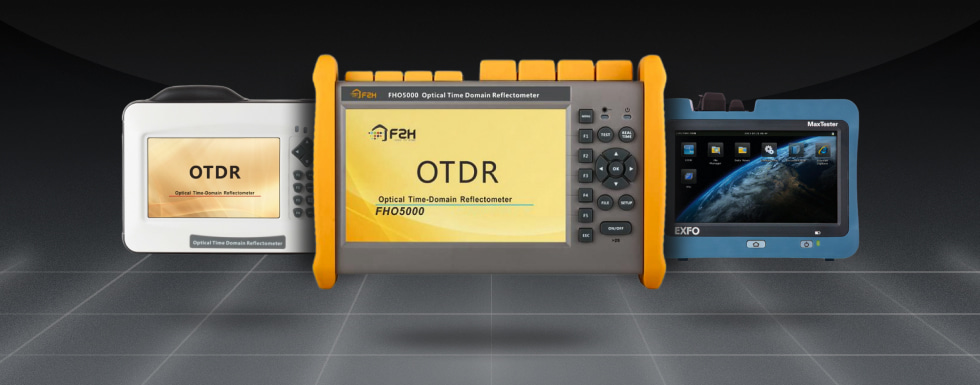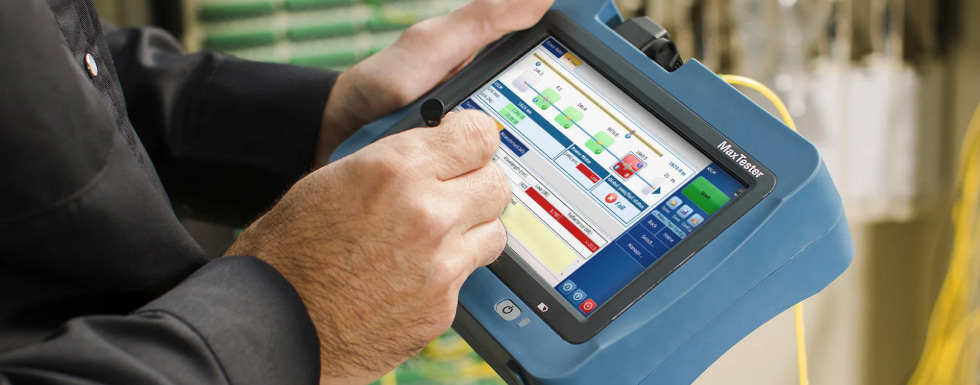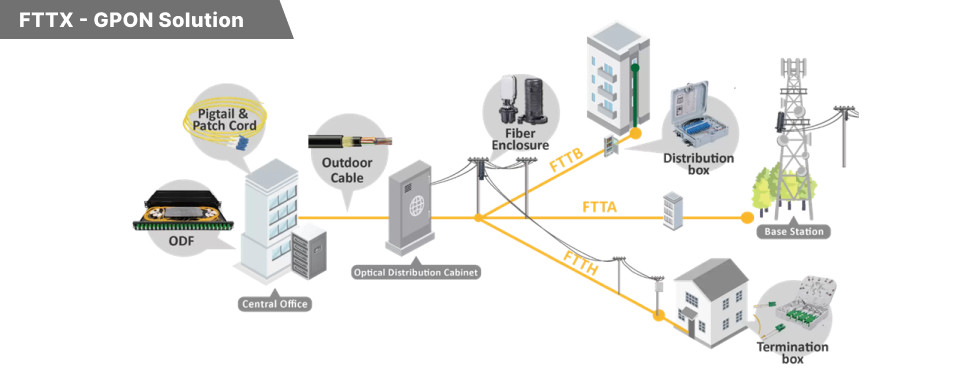OTDRs: Key to Efficient FTTx Networks Maintenance
New technologies are constantly emerging in the world, altering our daily lives and business processes. FTTx networks (Fiber to the X) are one such technology, offering broadband Internet access via fiber optic links.
However, effective maintenance of such networks requires accurate and up-to-date equipment to troubleshoot potential problems. OTDRs, like those designed to assist in diagnosing the condition of fiber optic communication lines (FOCLs), are essential tools for this purpose.
In this article, we'll examine how selecting the appropriate OTDR can greatly influence the efficiency and reliability of your fiber optic network.

Page Contents
- OTDR: Basic Functions and Applications
- How to Choose an OTDR?
- Comparative Analysis of FTTx Networks: Benefits and Drawbacks
- Insights and Conclusions
OTDR: Basic Functions and Applications
Optical Time Domain Reflectometer (OTDR) is a fundamental device used for measuring parameters and diagnosing the condition of Fiber Optic Communication Lines (FOCL).

OTDR functions:
- Detecting breaks in fiber optic cables, locating fiber breaks, and calculating the distance to breaks
- Identifying the locations of spliced joints and bends in the fiber
- Measuring losses at splitters
- Determining fiber quality and total fiber attenuation
OTDRs typically feature connectors for more than just fiber testing. They are also equipped with connectors for:
- Laser Sources (LS)
- Optical Power Meters (OPM)
- Visual Fault Locators (VFL)
They also often have:
- Additional connectors for connecting multimode fiber, PON (Passive Optical Network), and AON (Active Optical Network)
- RJ-45 interface for twisted pair testing
How to Choose an OTDR?
Most OTDRs are highly specialized devices designed to test single-mode or multimode fibers, as well as PON or active fibers. Typically, they are designed as standalone devices. To determine which OTDR to choose, it is recommended to consider the following factors.

What networks and fiber types do you work with?
If you need to test different types (single-mode, multimode, PON, active fiber), choose a device equipped with the appropriate functions.
What is the maximum distance you test at
For fiber optic lines with numerous branches and extended distances, it is essential to use a model that features a broad dynamic range of frequencies, pulse duration, and pulse types. These factors significantly impact the length of the "dead zones.
Measurement accuracy requirements
Consider the details of testing and FOCL certification to trunking standards, as well as automatic test modes and the ability to manually adjust parameters.
Place of operation (field or indoor)
OTDR portability, size and weight, mains or battery power? Professional laboratory equipment is usually not suitable for field measurements. For field network testing, an ideal choice would be a compact OTDR with the minimum required features.
However, the OTDR's functions can be extended or modified with various modules. This allows adapting one device to specific tasks and requirements. Structurally, the OTDR is a single platform with slots for modules, which enables specialized optical, Ethernet, multiservice and RF testing.
Comparative Analysis of FTTx Networks: Benefits and Drawbacks
The type of FTTx network is chosen depending on where the service is going to be provided.

FTTx, or 'fiber to the...' is a general term for a broadband network. There are several subspecies of FTTx technology, and they differ primarily in the location of the endpoint to which the fiber optic link reaches.
Let's explore a few basic types of last-mile construction.
- FTTH (Fiber To The Home) – fiber is brought directly into your home/apartment. The fiber optic network is built from the provider's equipment to your living space. FTTH network structure can be active star networks (AON), and passive optical networks (PON).
- FTTH – star. In this type of network FOCL is built from the central office of the provider to the local active node. From the active equipment builds a network or line to the end users.
- FTTH – PON. The main difference from the network type "star" is that the FOCL from the central office of the provider is built to the optical splitter - passive equipment, optical splitter, which divides the signal from one optical fiber into several. In this way, multiple consumers can be connected to a single fiber using an optical splitter and reduce costs by sharing the fiber. It also saves on active equipment.
The use of an active optical network makes it possible to provide service over much longer distances compared to a passive optical network.
Depending on the type of network, optical cable is also selected according to its parameters. For example, for a transport network (interstation network, between two communication nodes), through which large flows of information are transmitted, the broadband and reliability of the optical network is important. And on access networks, to provide information to subscribers (optical Ethernet, passive optical networks (PON)) it is important to be economical, flexible, small size and weight, protection from accidental damage, ease of installation and other factors.
Insights and Conclusions
In today's world, fiber optic networks are becoming more and more common and important for providing high-speed Internet and other telecommunication services. The right choice of optical OTDR plays a key role in ensuring the quality and reliability of such networks. By considering the technical characteristics of the OTDR and the features of FTTx networks, one can achieve optimal results in maintaining and operating fiber optic infrastructure.
